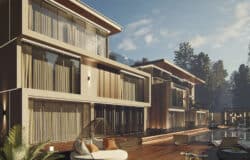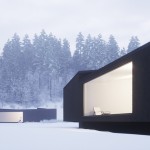iray and Exterior Scenes with Jeff Patton
I’ve followed Jeff Patton’s blog for some time now and he posted the first of three articles about the use of iray in 3d exterior architectural visualization scenes. Most of you probably know Jeff’s work by now. He’s doing a lot CG cars visualizations, but also archviz using mental ray mostly and has some great tutorials available via thegnomonworkshop.com if you are interested, But what interest me the most is his use if the new iray render engine in his work and what he has to share with us about it. In this new series he showcases the use of iray in a much more common architectural 3d rendering work scenario and how it plays with the current shortcomings of GPU on-board memory. I recommend you all to follow this series and i’ll make sure to plug it here so you do!
Visit the original post on jeff’s blog – iray for exterior scenes.
And please share your thoughts about iray here too… it will be interesting to know more about it from artists that do use it. For example how often do you use it, for what types of projects, etc…














It’s a nice article but browsing his Blog I have split feelings about. He uses a very high-end rig with Tesla cards worth several thoudands $$$. I think the price for this kind of speed is a bit high. Sometimes his blog reads like a commercial show because he doesn’t get tired to state that a GeforeCard is not designed for heat and and computing over a longer period.
It’s true but reading it over and over again is a bit strange. I wonder if he gets paid by a company for those tests and statements.
I use GPU rendering too and had no problems running my GTX480 or now my 3Gb GTX580 rendering overnight or even longer. Geforce cards get solid testing too so I don’t have fear of loosing one.
Well, I use GTX480 too and have no issues with them… but I’m no heavy user of GPU Rendering yet 😉 Mostly using them for VRay RT currently.
The cost / output ratio is till unknown to me with these high end cards vs. getting stronger CPU’s instead. I hope to learn more about this so the future decisions are much easier.
I have followed Jeff for years and found his tuts and blog posts very helpful and generally void of any kind of sales talk. I think the reason you hear him repeatedly mention his reasons for using “Pro” GPU cards is because I am sure he is asked this very often. It’s the same with Xeon vs Core i7. Why pay more for what seems like small if any performance increases? If you absolutely require the stability that’s reason enough right there. I find it amazing these days that most of use pay more for our rendering software then we do for our gear to run it! I myself take the Core i7 + GTX approach but I also have backup machines in case of failure so perhaps I am not saving any $$ there overall.
In any case I think it is very helpful Jeff is taking the time to inform the rest of us about his experiences with iRay. Certainly saves me some testing time. I for one think the RAM usage is surprisingly low considering those poly counts!
I think that the discussion about RAM usage, something I personally never really went into deep enough, due to the limitations of GPU’s is an important thing on it’s own! I learn a lot about optimizing scenes for regular CPU rendering too this way 😉
The vRAM is an very important topic and I won’t be able to use GPUs with commonly 1,5GB. Since I got my 3GB card I never looked back. Even some of my real-time Lumion3D stuff goes easily over 1,5GB.
vRAM is still a topic to be able to use the real-time rendering in a productive manner. If client comes to you and asks for a sudden expansion of a scene and you need to change a lot of stuff to make it fit into vRam you will be in trouble.
Good article! I´ve been using GPU render for archviz on Octane, Arion, Vray-RT and Iray. It´s very helpful seeing a pro doing the same. The lack of gpu render tutorials is huge. On the forums I participate few people uses Tesla rigs, the freedom that Jeff Patton has with his RAM is a dream for the rest of us attached to 1Gb, maybe 2Gb of memory! His choices are interesting too, on the RT era, he choses to run a high speed render without instant feedback.